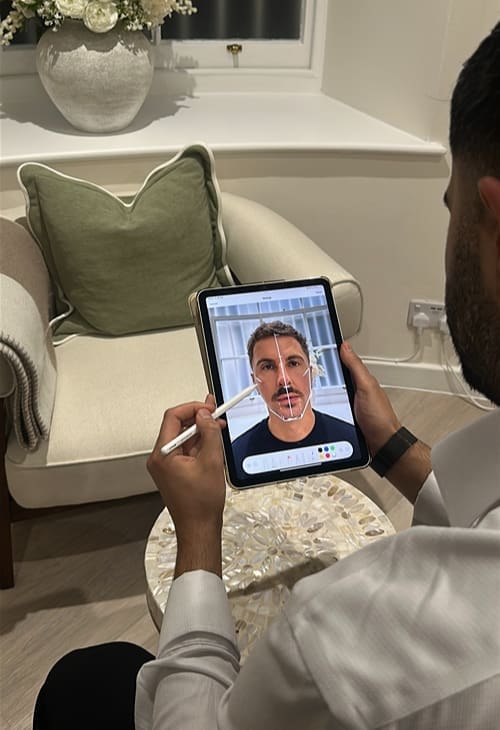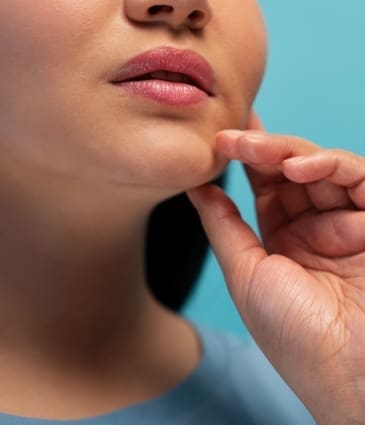Explore the causes, prevention, and non-surgical treatments for a misshapen or large nose, including the benefits of nose filler and non-surgical rhinoplasty.
Condition
Misshapen or Large Nose

Overview
A misshapen or large nose can affect facial harmony and self-confidence. Many patients seek subtle refinements rather than invasive surgery. Modern non-surgical techniques like nose filler (non-surgical rhinoplasty) allow reshaping, smoothing bumps, and improving symmetry with minimal downtime.
This guide explains why noses appear large or uneven, how changes can be managed naturally over time, and the professional treatment options available to achieve a balanced, refined profile.
What is a Misshapen or Large Nose?
A misshapen or large nose can take many forms:
- A prominent dorsal hump
- Drooping or asymmetrical tip
- Wide or bulbous nasal tip
- Crooked or uneven nasal bridge
While some features are congenital, others may result from trauma, ageing, or past surgical interventions. The perception of a “large” nose often relates to facial proportion, rather than absolute size. Even minor irregularities can create the impression of imbalance in an otherwise harmonious face.
In many cases, the goal is not complete transformation but refinement and restoration of symmetry, creating a nose that complements the face naturally.
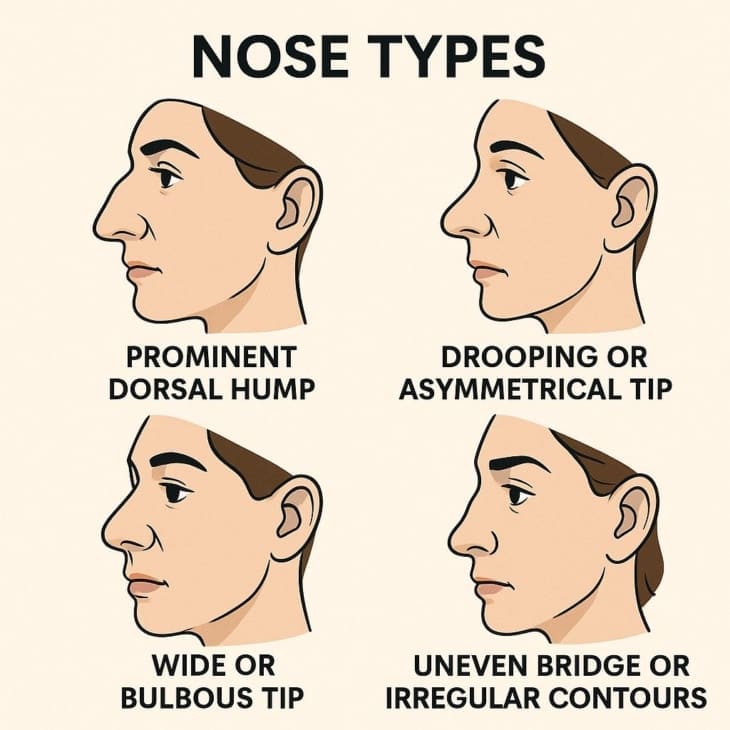
Causes of a Misshapen or Large Nose
1. Genetics and Bone Structure
The underlying nasal bones and cartilage shape the nose. Genetic traits largely determine the bridge height, tip shape, and overall profile. A prominent or wide nose is often inherited.
2. Trauma or Injury
Previous accidents, fractures, or even minor knocks can subtly or dramatically alter nasal symmetry. Scar tissue or cartilage displacement may cause a crooked or uneven appearance.
3. Ageing Changes
Over time, cartilage weakens and the nasal tip may droop or elongate. Skin becomes thinner and loses elasticity, subtly altering the apparent size and shape of the nose.
4. Environmental and Lifestyle Factors
- High-impact sports or accidents
- Past surgeries or nasal procedures
- Chronic pressure on the nose (rare but possible)
Understanding these factors allows tailored treatment that addresses both structural and surface-level concerns.
How to Prevent or Minimise Changes
While genetics cannot be changed, certain habits can reduce noticeable changes over time:
- Protect Against Trauma: Wear facial protection during sports or risky activities.
- Gentle Skin Care: Use moisturisers and SPF to maintain elasticity around the nose.
- Avoid Excessive Pressure: Be mindful of sleeping positions or habits that press on the nose.
Treatment: Nose Filler (Non-Surgical Rhinoplasty)
A non-surgical rhinoplasty is a popular treatment for reshaping a misshapen or large nose without surgery. Using hyaluronic acid filler, it can:
- Smooth bumps on the bridge
- Lift or refine a drooping tip
- Correct minor asymmetry
- Enhance overall facial proportion
Procedure:
- A detailed facial assessment evaluates symmetry, bridge height, tip projection, and proportion relative to other features.
- Precise filler injections reshape the nasal bridge and tip.
- Treatment typically takes 20–40 minutes with minimal discomfort.
Benefits:
- Immediate visual improvement with subtle, natural results
- Minimal downtime and reversible if needed
- Enhances facial harmony by complementing existing features
- Results last 12–18 months, depending on product and metabolism
At Dr Hass Clinic, treatments combine advanced anatomical expertise and aesthetic artistry, ensuring precise placement, natural proportions, and preservation of expression.
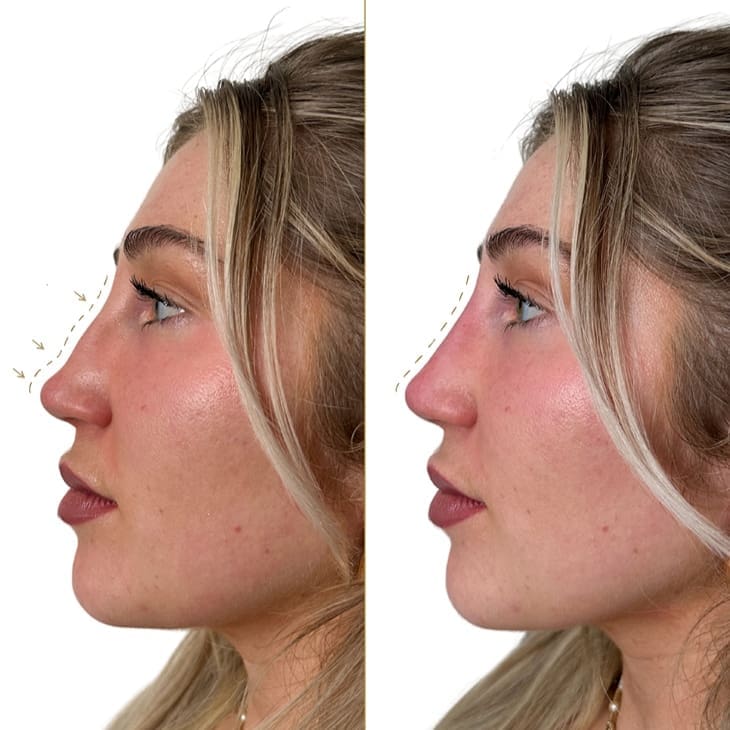
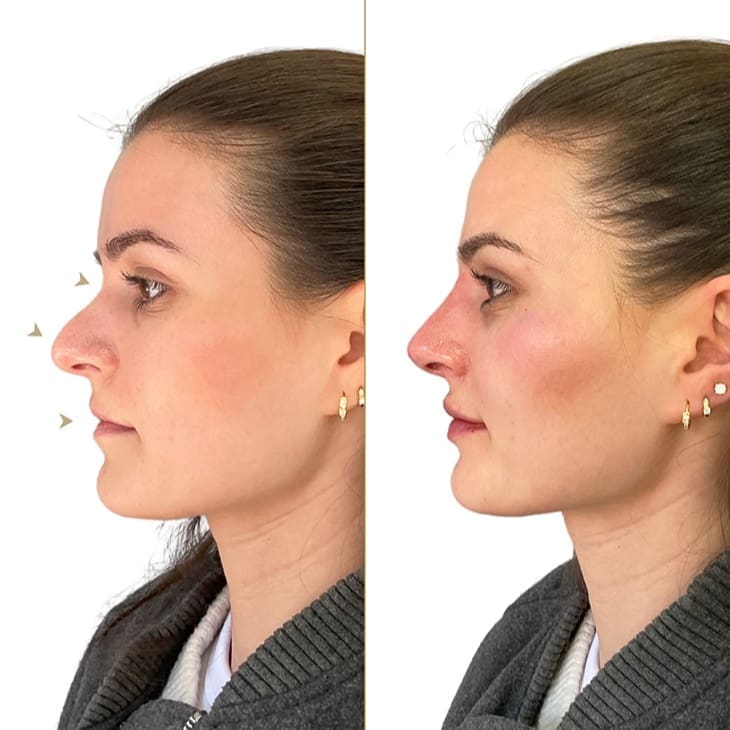
Treatment: Surgical Options
For patients seeking permanent or more dramatic changes, surgical rhinoplasty remains the gold standard. This procedure allows for precise reshaping of the nasal bones and cartilage to achieve lasting correction and optimal facial balance.
Surgical rhinoplasty can:
- Correct severe asymmetry or structural deformities that cannot be fully addressed with non-surgical techniques
- Refine the nasal tip, bridge, or nostrils to create harmonious proportions and a more aesthetically balanced profile
- Address functional issues, such as breathing difficulties, deviated septum, or nasal obstruction
The procedure involves careful pre-operative planning, often including imaging and detailed facial analysis, to ensure results complement the patient’s overall features. Recovery typically involves some swelling and bruising, but the results are long-lasting and permanent.
Surgery is generally recommended when:
- The desired changes are too significant for fillers to achieve
- There is a need to correct underlying structural or functional problems
- Patients prefer a permanent, long-term solution rather than periodic maintenance
Even for patients considering surgical rhinoplasty, non-surgical techniques like nose filler can sometimes be used temporarily or as a preview to simulate potential outcomes before committing to surgery, ensuring informed and confident decision-making.
Conclusion
A misshapen or large nose can be refined safely, subtly, and effectively. Non-surgical rhinoplasty / nose filler offers a minimally invasive solution to smooth irregularities, lift the tip, and enhance symmetry. Combined with complementary treatments like chin or jawline filler and skin boosters, patients achieve a balanced, natural, and harmonious profile.
Experienced practitioners ensure safe, precise treatment tailored to your facial structure, creating results that look elegant and timeless.
FAQs
Can a large nose be reduced without surgery?
Yes, non-surgical rhinoplasty can smooth bumps, refine the tip, and improve symmetry. Severe size reduction may require surgical rhinoplasty.
How long do nose filler results last?
Typically 12–18 months. Touch-ups maintain shape and refinement.
Is nose filler safe?
Yes, when performed by a skilled practitioner with deep knowledge of nasal anatomy. Results are natural and precise.
Can non-surgical rhinoplasty correct a crooked nose?
Minor asymmetry can be corrected effectively. Significant deviation may need surgical intervention.
What is the difference between surgical and non-surgical rhinoplasty?
Surgical rhinoplasty permanently adjusts bone and cartilage for more dramatic results, while non-surgical uses injectable filler to refine shape subtly.
Does non-surgical rhinoplasty hurt?
Discomfort is usually mild. Topical anaesthetic can be applied to minimise sensation.


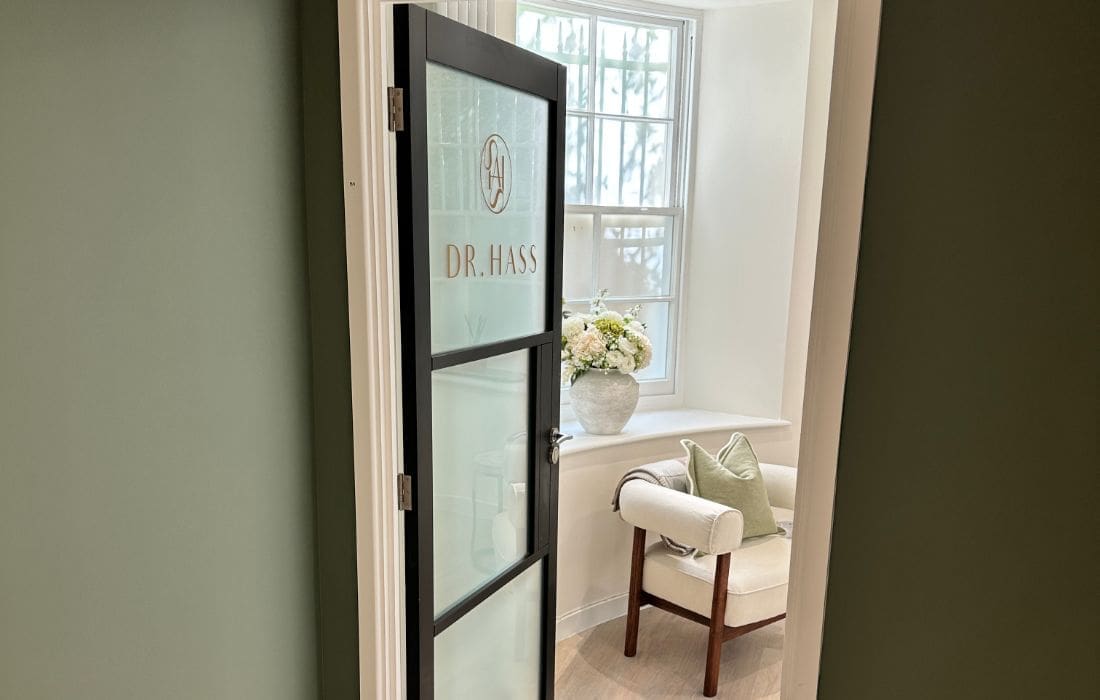

Our Clinic
Your Sanctuary
Welcome to our clinic, where innovation, expertise, and personalised care merge to redefine your natural beauty. We specialise in providing a wide range of non-invasive treatments that deliver remarkable results without the need for surgery.
What Our Clients Say
Our clients’ satisfaction is at the heart of everything we do. We take immense pride in helping individuals enhance their natural beauty and boost their confidence. But don’t just take our word for it—here’s what some of our valued clients have to say.

